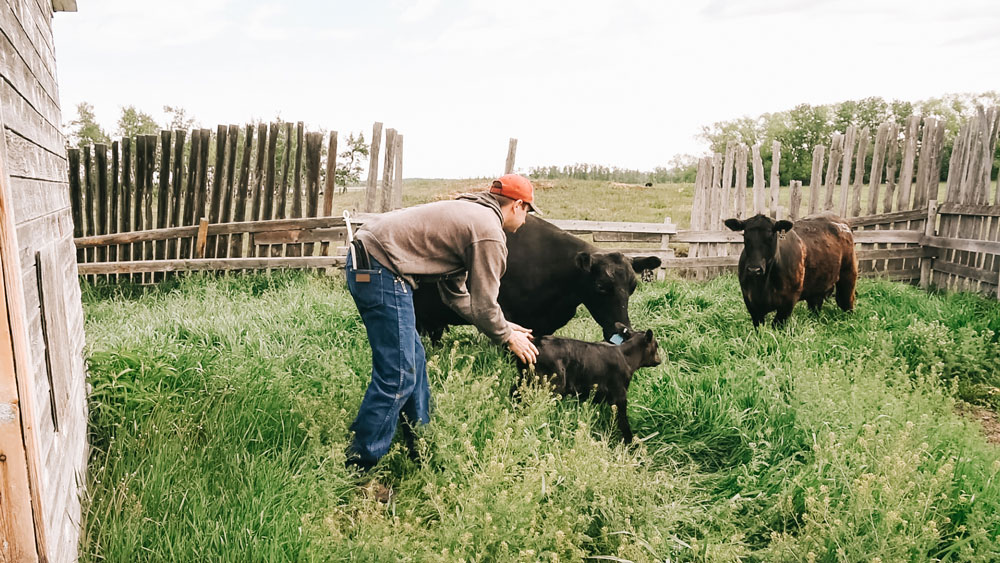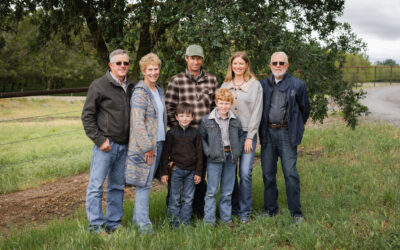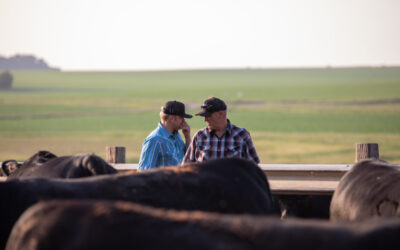
Tame your selection criteria
Docility proven as economically relevant trait
by Natalie Jones
September 23, 2019
You keep looking to beef quality, maternal and feed efficiency for herd improvement. What about docility? Research says it may have more impact than you realize.
A study by Gordon Carstens’ team at Texas A&M University with feedlot Angus, Brangus, Braford and Simbra heifers found the share grading Choice or higher was 63.5% for calm temperaments, compared to 55.5% for their excitable pen mates. Based on weights and USDA’s three-year-average grid, the calm advantage was $56 per head.
The study compared feedyard and carcass performance based on exit velocity (EV) from a chute using electronic timers like those used in barrel racing. No breed differences were found that relate to temperament.
In the feedyard
Calm heifers were heavier at arrival than excitable heifers, though similar in age. Likewise, they ate more and for longer periods, grew faster and more efficiently than excitable pen mates. They also approached the bunk 12 minutes sooner after feed delivery each morning.
Looking at breed differences, Angus heifers grew faster and more efficiently than all others, but Carstens says, “There was no evidence to suggest breed influenced the effects of temperament.”
Therefore, he suggests, “sorting feeder calves by EV into targeted production-outcome groups to improve predictability of feedlot performance and consistency of beef quality.”
Less aggressive growth enhancement technologies might be applied to feeder calves with calm temperaments targeted for value-based marketing programs, Carstens says, noting, “These ideas warrant further study.”

On the rail
Carcasses from the calm heifers were 24 pounds heavier with more back fat and higher yield grades despite greater ribeye area compared with heifers with excitable temperaments. Warner-Bratzler shear force tests showed steaks from calm heifers had a significant tenderness advantage.
The carcass income premium for calm heifers over excitable was 4% to 5% higher in this study, which noted “further research could be performed to elucidate the impact that temperament has on carcass quality and profitability of feedlot cattle.”
Breed significantly impacted carcass value.
Angus heifers generated nearly 10 cents more per pound of hot carcass weight, compared to the other breeds, the study reports.
The point for Angus breeders is, Carstens says, “Docility is an economically important trait.” From the lighter weights and lower efficiency to other research showing the impact on health and reproductive efficiency, it would likely pay to include docility in a balanced-trait selection program.
In the pasture
There’s proof of progress within the American Angus Association database, says Kelli Retallick, Genetic Service Director at Angus Genetics, Inc. The average EPD (expected progeny difference), DOC, has increased by 8 points in the 10 years it has been measured, she says. It has been an official EPD since early 2011.
Measured on yearlings, it’s an accurate indicator going into the feedyard. The relatively new $M, or weaned calf value index, combines the maternal traits of heifer pregnancy, maternal milk, calving ease and docility to aid in multi-trait selection, she says.
“In a seedstock operation, it will be crucial to take note of docility scores, take some culling measures and breed for increased docility,” Retallick says.
The index is an example, she says, of how the Association has focused on “decreasing the cow-cost side of the cattle operation to allow seedstock breeders to breed better cattle for the commercial cattle industry.”
At 44% heritability, docility is moderately to highly heritable, but Retallick says there’s more to it than genetics.
“More than half of that 100% comes from the environment, all the way from birth to harvest,” she says. “That includes working cattle in a slow manner through the chute and practicing good stockmanship in the weaning phase, for example.”
Management and selection go hand in hand. Carstens and Retallick say progress on both fronts to improve docility will bring benefits at every level, from the cattle to their managers and ultimately beef consumers.
you may also like
Legacy in the Golden Land
On a quiet stretch of Northern California rangeland, a different story unfolds. The Borror family’s legacy modestly speaks through the cattle they raise, the ground they steward. The generations who’ve made a life here demonstrate commitment to doing things right, even when no one is watching.
System Over Scale
For Dallas Knobloch, it’s not about being the biggest feedyard—it’s about building a high-quality system that works. Today, with Tory’s wife Sadie and daughter Ivy, the Knobloch family owns and operates 4K Cattle. They feed 2,500 cattle at eight locations within 10 miles of home, manage 1,000 acres of crops and run a 125-head cow herd, all near Hills, Minn.
Data-Driven Progress and Partnerships
Discussions at Feeding Quality Forum reaffirmed the industry’s commitment to quality, transparency and innovation. With record Prime rates and strong consumer demand, producers who invest in genetics, health and relationships are positioned to drive progress and capture premiums.



